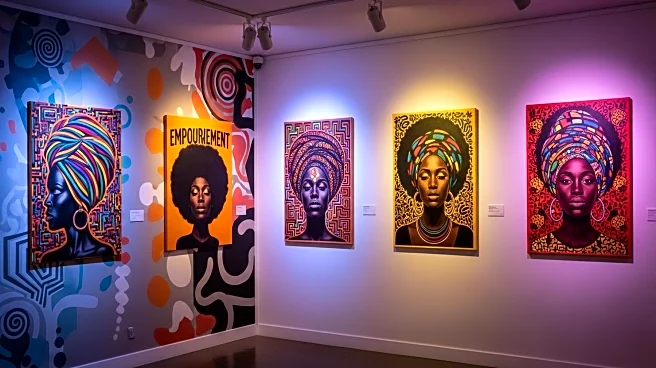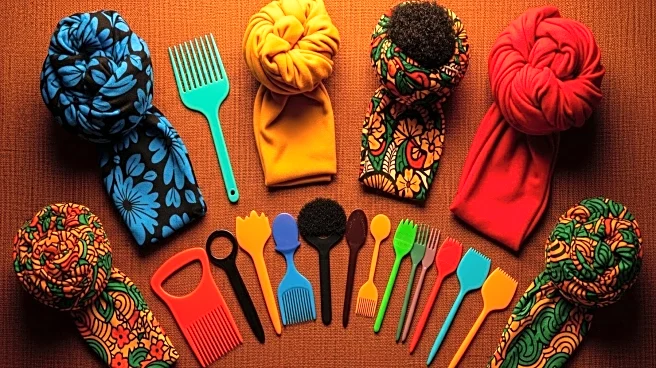What is the story about?
What's Happening?
A new documentary by writer-director Yemi Bamiro explores the influential career of Kwame Brathwaite, a photographer, musician, and African American activist. Brathwaite, along with his brother Elombe, coined the phrase 'Black Is Beautiful' in the 1960s, capturing empowering images of African Americans that challenged conventional beauty standards. His work with the Grandassa Models in Harlem and his involvement in the Black power movement, including photographing Muhammad Ali and the Jackson 5, positioned him as a pivotal figure in cultural representation. The documentary also addresses the oversight of Brathwaite's contributions in the National Museum of African American History and Culture, highlighting his son's efforts to rectify this omission.
Why It's Important?
Kwame Brathwaite's work played a crucial role in redefining African American beauty and identity during a transformative period in U.S. history. By challenging prevailing beauty norms, Brathwaite's photography contributed to a broader cultural and political movement that empowered African Americans and fostered a sense of pride and community. The documentary serves as a reminder of the importance of representation and the impact of visual media in shaping societal perceptions. It also underscores the need for historical recognition of influential figures who have been overlooked, ensuring their contributions are acknowledged and celebrated.
What's Next?
The documentary may inspire renewed interest in Brathwaite's work and lead to further recognition of his contributions to African American culture and history. It could also prompt discussions about the representation of African American artists in national institutions and the importance of preserving their legacies. As the film gains attention, it may encourage other filmmakers and historians to explore similar stories, contributing to a more inclusive narrative of American history.
Beyond the Headlines
Brathwaite's story highlights the intersection of art and activism, demonstrating how creative expression can drive social change. His work not only challenged beauty standards but also provided a platform for political movements, illustrating the power of imagery in mobilizing communities. The documentary invites viewers to consider the broader implications of representation in media and the ongoing struggle for cultural equity.
AI Generated Content
Do you find this article useful?














